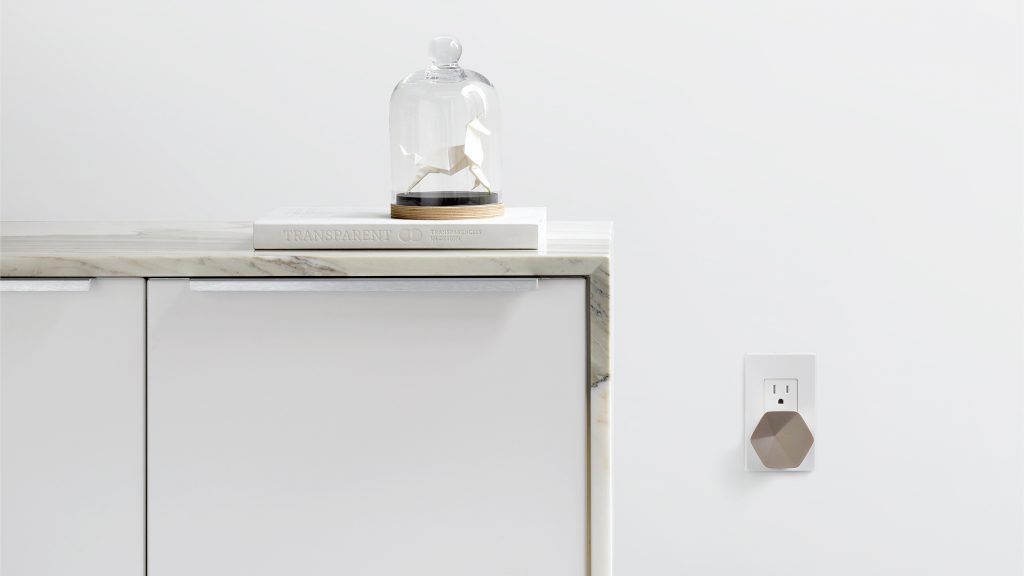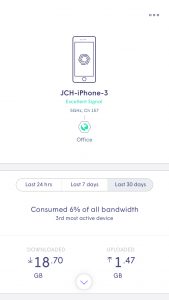After my less than great experience trying out Netgear's Orbi wireless mesh product, I continued looking around for a better home wireless networking option.
I checked out the second generation Eero, but it wanted to replace my router, didn't support an OpenVPN server, and was going to cost $100/year ongoing for cloud-based services (malware protection, parental controls) that I want to manage locally. ASUS's HiveSpot aka Lyra offering looked interesting and would go nicely with my existing ASUS router, but the reviews I could find indicated deal-breaking performance problems. Google's Wifi option requires a persistent connection to their systems, doesn't support an OpenVPN server, and wants to replace my router to make use of most of its features.
Ubiquity's Unifi product line comes highly recommended by a number of people I trust. But as I explored what it can do and what I would need to do to manage it, I felt like I was crossing fully into the realm of "enterprise network administrator" instead of "home network user." Enabling something as standard as IPv6 included steps like "Copy the config.gateway.json file to the UniFi controller and force a provision on the USG." Not that big of a deal, but I've spent enough time doing command line management of network device config files professionally that I'm not super excited about doing it at home any more.
Then I found the Plume Wifi offering. I didn't find a lot of reviews about it, but the ones I did read indicated it had an innovative approach to providing an "advanced network topology," great speeds and a focus on doing wireless really well instead of trying to be an everything home networking appliance. That's what I wanted! They also had a detailed-but-beautiful website, a helpful blog (despite being on Medium) and some growing Twitter buzz. Once I confirmed that they'll let you try it out for 60 days with a money-back guarantee (assuming no damage and original packaging), I ordered a set of six units.
Plume is designed as a series of small network modules, or pods, that plug directly into power outlets throughout your living space:

The Plume packaging is well designed and minimal. The pods come in sets of three different colors and are discreet enough to fade into the background most anywhere. They're smaller than a tennis ball and only 3.17oz / 90g, have a single ethernet port that allows you to plug in additional LAN devices OR set up a hardwired ethernet configuration, and have a single small LED that is mainly on during startup and network optimization.
The setup process using Plume's app (on iOS in my case) was very smooth and impressive. You can pick any Plume pod from the box to designate as the unit connected (by ethernet) to your router or directly to your cable/fiber/DSL modem, and then it walks you through plugging in units 2 through 6. The app had great visual feedback about each step of the way. It was especially cool that when it came time to name each pod according to what room it's in, you can just hold your mobile device near the one you're working with and it will pick it out of the group for you. Plume had no trouble being behind my existing router and just greyed out those items (IP reservations, port forwarding, DNS server management, UPnP) in the app's UI.
From there, Plume's cloud-based network optimization kicks in. While other product offerings seemed to require connectivity to the mothership for basic functioning, I was more comfortable with the idea that once in a while my Plume set would send some information about network configuration and signal strength back to a more powerful computing setup that could decide which pod should be chained off of which other pod and other related settings. Like some enterprise-grade options out there, Plume's algorithms make sure that devices requiring more bandwidth have access to it when needed. Plume makes it easy to rearrange pods into different locations if you need to. And if my Internet connection went down or if Plume closed up shop, my wireless network wouldn't be affected in any material way.
Plume's documentation says that it takes about 15 minutes to do an initial network optimization, and then it does a more complete version within the first 24 hours. (It's nice that Plume seems to detect when my home network is operating at an off-peak time and does its optimizing then.) While I did notice that there were some rough spots of connectivity after first turning Plume on, within 24 hours I had access to the full speeds of my Internet connection and really fast internal ping times in every part of the house. Amazing.
I was also pleasantly surprised to find a feature I hadn't encountered in any of Plume's documentation or reviews: periodic speed tests (down and up) to ensure the main connection to the Internet is as fast as it's supposed to be. Given that Comcast has been less than accurate about this in the past, it's reassuring to know I don't have to set up my own monitoring any more. Plume also reports on how much data individual devices are transferring in a given time period, and what percentage of overall usage that represents. (It doesn't seem to distinguish between local network traffic and traffic headed for the Internet, so if you have local backups running like I do, this isn't as interesting.)
Though I haven't used it yet beyond testing, I also like that the Plume app gives me the ability to freeze Internet access for an individual device, "Until end of day," "School nights," "Bed time," or "Indefinitely." This is something that would be much more cumbersome to do with my main router, and it makes sense to have it built in to the management of the wireless network itself.
There are a few areas where I'm looking for improvement from Plume:
- Guest SSID support. Plume's website says this is coming soon, but there's no timeline on it and it's a feature I miss from my previous setup. If I really needed to I could re-enable the wireless radio on my main router to do this. Guest access is now supported.
- User-initiated firmware updates. When I first turned my Plume configuration on, I found there was a very recent firmware update that brought some new features I wanted to try. Without a way to initiate that locally, I had to contact support and ask them to do it, confirm that yes I was really okay with having my network down during the update, and then have them proceed. I get that it's hard to balance access to advanced features with not having typical users need to worry about such things, but it left me a little uneasy about a future scenario where there's a security update that I want to get in place ASAP.
- Explanations of connection strength and optimization results. On one day my Plume app says that a given room has an "excellent connection" and then the next day it might say it has a "fair connection," without any physical changes in the network on my end, and with no noticeable degradation in actual on-the-ground network usage. It would be nice if Plume could better quantify these measurements and what kinds of things affect them. Again, maybe a more advanced feature, but something I'm interested in.
- Ability to disable the LEDs. Just once I noticed a Plume LED flashing in the night, probably during a network optimization process. This should be optional.
- International availability. It seems a shame that you can only buy and ship Plume to the U.S. They say they're working on it, but there's no timeline. Sorry, non-U.S. readers.
Overall these feel like minor things. Ever since plugging them in a month ago, my Plume pods have worked flawlessly and consistently and the network coverage across the house has been great. When I've contacted customer support they've been fast, helpful and to the point in their responses. And I finally feel like I'm running a modern wireless network.
If I were setting up a new home network for friends or family who needed a consolidated router+wireless configuration, simplified management tools, and didn't care about depending on cloud services for daily operation, I MIGHT still go with another option. But I'm really enjoying the combination of my "prosumer" router and Plume's advanced-but-easy wireless technology. I highly recommend Plume to anyone else with similar needs.
Updated Feb 6, 2018 to reflect that guest access is now supported.
 I’m a journalist, publisher, software developer and entrepreneur with experience as a founder and organizational leader. Work with me or learn more about me.
I’m a journalist, publisher, software developer and entrepreneur with experience as a founder and organizational leader. Work with me or learn more about me.



I have a 6000 sqft house with Wi-Fi enabled irrigation controllers outside. What is the range of one pod?
I have 4800 sq ft house. 12 pods. One in each room and common areas. Full coverage everywhere.